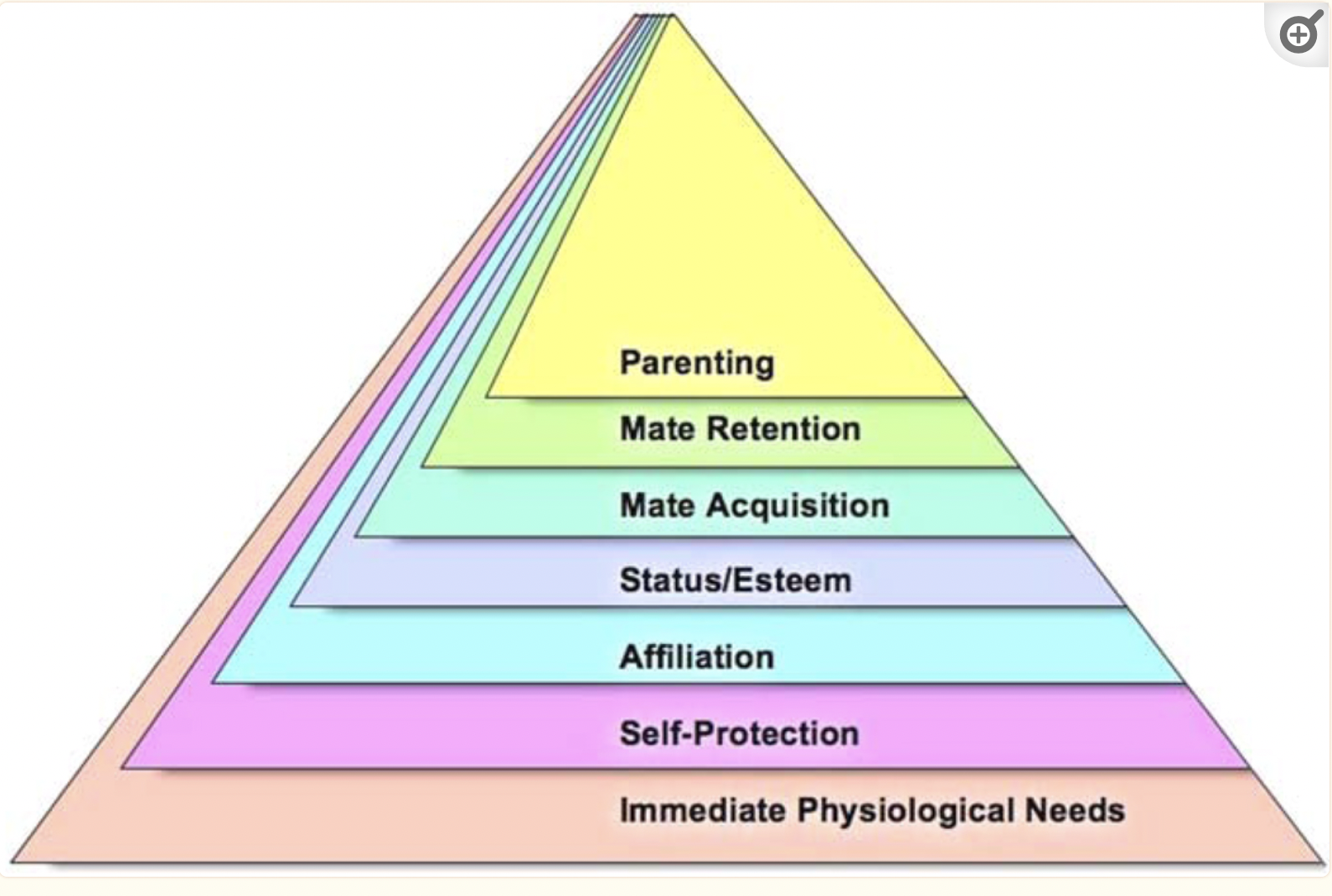Szymon's Zettelkasten
Powered by 🌱Roam GardenP: Maslow's Pyramid of Needs
Keywords:: PermanentNote makePublic
Maslow's pyramid of needs was an ingenious approach to map human motivation. He determined biologically-based—and therefore quite accurate—needs and presented them in a form of a pyramid, which helpfully indicated the priorititative character of what our motivations.
However, in light of contemporary research, Maslow's pyramid appears to be partially outdated. Nevertheless, scientists have put effort to renovate it with using newest science.
(I won't get into what has changed but I'll directly describe the updated version of the pyramid.)
As you can see, the pyramid consists of several biologically-based needs.
Starting from the bottom, the needs are presented chronologically—meaning, in order that they appear throughout one's life—and based on importance—it's more important (biologically speaking) to do parenting than it is to meet friends.
Needs build upon each other as overlapping layers, which indicates that they're not replacing each other. Once a goal system has developed, its activation will be triggered whenever relevant environmental cues are salient. For example, an appearance of an attractive potential mate will trigger the mate acquisition need or noticing a dangerous snake will activate the self-protection need, and so on.
Furthermore, higher needs are indeed more attractive and thus often prioritized; however, their attainment will be compromised, when lower needs aren't satisfied. For example, if you satisfy your need for status first, it's going to be easier to attract new mates. Those needs that are higher can be pursued at any time, but when lower needs aren't satisfied, the pursuit won't be effective. For example, if you focus on mate acquisition without addressing esteem/status needs first, you'll have access to lower-quality mates.
{write that we're mostly unaware of our motivations}
Let's get to the needs.
Immediate Physiological Needs: everything you do in the toiled and kitchen.
Self-protection: getting closer to what brings safety and avoiding things that can harm you.
Affiliation: love, affection, belongingness from others; social safety-net
Status/Esteem: esteem of others—i.e., status—and esteem from yourself—i.e., self-esteem.
Mate acquisition:
Mate retention:
Parenting:
I get deeper into these needs in another note:
Relevant notes (PN: )/questions (Q:):
P: How to compel people to action (the Fogg Behavioral Model): Maslow's pyramid may act as a great complement to Fogg's motivations
Referenced in
P: Why can't we see Black Swans?
Further, we have a false belief that we understand how we and the world works. We are driven so heavily by instincts and by the subconscious.
P: You're not as rational as you think P: Maslow's Pyramid of Needs P: Is everything really revolving around procreation? All biases basically
P: Motivation (Fogg Behavioral Model)
Fogg's motivators seem to cover some of Maslow's needs (P: Maslow's Pyramid of Needs). Sensation seems to be very close to immediate physiological (and maybe to self-protection) needs and belonging similar to affiliation. Anticipation doesn't seem to have an obvious partner in Maslow's needs but it may be loosely related to status/esteem and mate acquisition. The reasoning is the following. Given that procreation is our primary motivator—we seem to be doing almost everything to increase our chances and quality of spreading our genes (mostly unconsciously)—we might be basing our hope and fear on whether our actions will grow prospects of successful mating? I don't know. I developed this thought here: P: Is everything really revolving around procreation?
P: Is everything really revolving around procreation?
Second, according to the field of life history, humans' primary goal is reproductive success. And Maslow's pyramid of needs reflects that view. Our top three needs—mate acquisition, mate retention, and parenting—are connected to procreation. What's more, the attainment of a lower need, facilitates the achievement of a higher need. This means that although needs are indeed autonomous—meaning they'll be triggered whenever a relevant cue's present in the environment, even though higher needs are already developed—they're also progressive—all things being equal, we'll prioritize higher needs.
P: The teacher appears when the student is ready
The pyramid of needs tells us that a given need won't be relevant for the individual who hasn't satisfied preceding needs—physiological needs, self-protection, affiliation, status/esteem. Only once those needs are satisfied, can the teacher appear. More: P: Maslow's Pyramid of Needs
